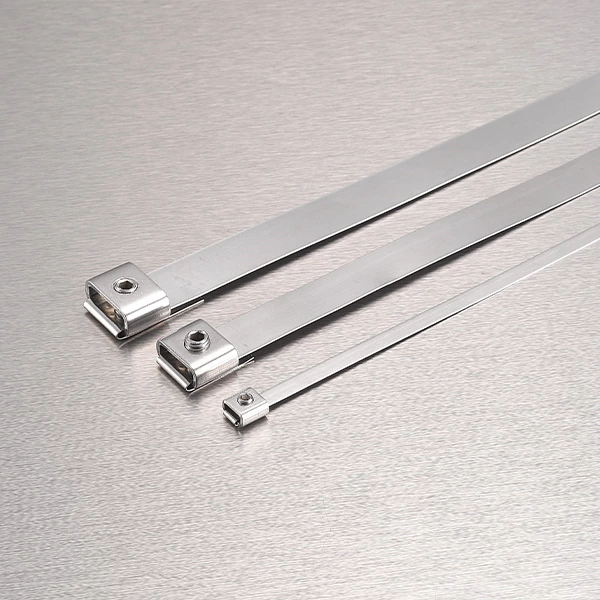Types And Uses Of Stainless Steel Cable Ties
With the development of industry, the market demand for Stainless Steel Cable Tie has increased significantly, and there are more and more domestic manufacturers producing this product. From simply imitating foreign products to bold innovation, in recent years, the production and manufacturing technology of cable ties has been continuously mature and improved. According to different use environments and use requirements, cable ties of different types and uses can be produced. Today we will briefly introduce the common types and uses of cable ties on the market.
According to different forms, stainless steel cable ties can be divided into two categories: pre-installed and homemade.
Among the more common prefabricated cable ties are: self-locking cable ties, stepped cable ties, retractable cable ties, ratchet cable ties and tightening cable ties.
In addition, there are special cable ties specifically used in marine engineering and shipbuilding, such as D-type cable ties, L-type cable ties and O-type cable ties.
According to different coating processes, cable ties can be divided into plastic-sprayed cable ties and plastic-coated cable ties. In order to enhance the corrosion resistance of the cable tie, a coating can be added to the surface of the cable tie. The coating has many benefits. It can not only enhance the corrosion resistance of the cable tie, but also effectively prevent friction corrosion caused by contact between the cable tie and the surface of the tied object.
Another big advantage of the coating is that it can be customized according to customer requirements, so that the color of the cable tie can match the color of the use environment, and achieve the unity and coordination of the color of the cable tie and the environment.
The self-locking cable tie uses the working principle of steel ball locking. It is suitable for elastic objects or small and light objects, such as cables, signs, etc., and is not suitable for bundling harder objects in a vibrating environment. Because it comes with a buckle, when bundling, the steel ball in the cable tie needs to be locked under the rebound of the tied object. If the tied object is a hard object and it vibrates itself, it will cause the steel ball to loosen, and naturally the locking effect cannot be achieved.
The stepped cable tie is opposite to the self-locking cable tie. It is suitable for tying hard objects. Its main principle is that there are punched holes on the surface of the cable tie and barbs on the head. The punched holes and barbs can bite well, so that the tied objects will not loosen.
The self-locking and stepped cable ties cannot be reused like other cable ties. Once locked, if you want to disassemble, you can only destroy the cable tie. If the tied objects need to be used frequently, you can choose a retractable cable tie.
The head of the ratchet cable tie is arc-shaped, so when tying, it can fit cylindrical objects better, and no special tools are needed when tying, so it is often used to tie on telephone poles, road signs, etc.
Prefabricated cable ties can be said to be basically pre-installed, and they have certain specifications and sizes, so they are suitable for occasions with specific bundling length requirements.
If the items to be tied are of different sizes and shapes and in large quantities during actual use, prefabricated cable ties often cannot meet the requirements of use, so homemade stainless steel cable ties are needed.
Homemade cable ties are DIY cable ties. The cable ties and blasters are often packaged separately. When using, users can cut the length according to the actual bundling requirements. Its main feature is flexible use. The width range of the cable tie is usually 4.6~32.0mm, the thickness range is usually 0.25~1.20mm, and the length range is usually 30~100m.
There are many types of homemade stainless steel cable ties. The specific types are determined by the buckle. The environment and bundled items of different buckles are different. Common buckles include tooth-shaped buckles, L-shaped buckles, screw-shaped buckles, flat buckles, etc.



